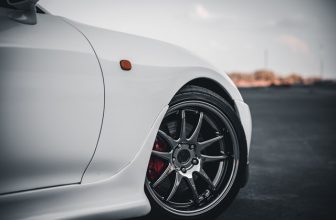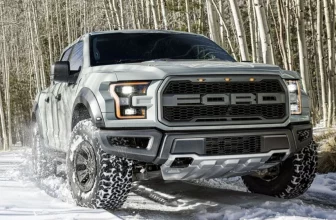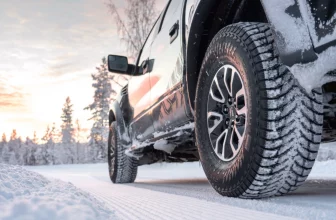What do you look for in a tire? Do you focus on ride comfort, durability or all-season capabilities? Are you a driver who spends most of the time on the highway with occasional detours to rugged off-road? Selecting the right set of tires for your vehicle can be tedious.
You need basic knowledge of several technical specifications for the several tire brands available in the market. At the same time, you focus on keeping the tire acquisition and maintenance costs as low as possible. Standard touring all-season tires are an economical choice for drivers who prefer balanced all-season performances.
What desirable features do drivers have to look for when shopping for the best all-season touring tires? How do you go about differentiating brands and earmarking the right tires that will guarantee all-weather traction? Under which situations do these tires perform better? Standard touring all-season tires are a good choice for drivers searching for durable, dependable and comfortable sets of tires.
This article provides a comprehensive, unbiased description of standard touring all-season tires. We compare their performances in different driving conditions. Although they are not high-performance tires, they compete favorably against several other categories.
We also answer some of those burning questions that drivers have regarding standard touring all-season tires. Aside from improving your tire shopping experience, we want you to choose a brand that offers the best value for your hard-earned money.
| Tire name | Overall Rating | Wet performance | Hydroplaning resistance | Wet traction | Dry performance | Cornering stability | Dry traction | Steering response | Winter/snow performance | Comfort performance | Ride quality | Noise score | Treadwear performance |
|---|---|---|---|---|---|---|---|---|---|---|---|---|---|
| Michelin Defender T+H | 9 | 9 | 9.1 | 8.9 | 9.3 | 9.2 | 9.5 | 9.2 | 7.4 | 8.8 | 8.9 | 8.7 | 8.8 |
| Goodyear Assurance MaxLife | 9 | 8.8 | 8.8 | 8.8 | 9.2 | 9 | 9.3 | 9.1 | 8 | 8.8 | 9.1 | 8.6 | 9.4 |
| Continental TrueContact Tour | 9 | 9.1 | 9.2 | 9.1 | 9.2 | 9.1 | 9.4 | 9.1 | 8.2 | 9 | 9.2 | 8.8 | 9 |
| BFGoodrich Advantage T/A Sport (T-Speed Rated) | 9 | 9.2 | 9.2 | 9.2 | 9.4 | 9.4 | 9.5 | 9.4 | 8.6 | 9.1 | 9.4 | 8.8 | 8.8 |
| Yokohama AVID TOURING-S | 8 | 7.5 | 7.6 | 7.5 | 8.2 | 8 | 8.5 | 8.1 | 6.1 | 8.1 | 8.2 | 7.9 | 7.7 |
| Sumitomo Touring LS T | 8 | 7.5 | 7.5 | 7.4 | 8.3 | 8.1 | 8.5 | 8.4 | 6.2 | 7.9 | 8.1 | 7.7 | 7.9 |
| Pirelli P4 Four Seasons Plus | 8 | 8.7 | 8.8 | 8.6 | 8.9 | 8.8 | 8.9 | 8.9 | 7.4 | 8.1 | 8.3 | 7.8 | 8.8 |
| Kumho Solus TA11 | 8 | 7.9 | 7.9 | 8 | 8.2 | 7.9 | 8.7 | 8.1 | 6.6 | 7.9 | 8.3 | 7.5 | 7.7 |
| Hankook Kinergy ST | 8 | 8.1 | 8 | 8.2 | 8.9 | 8.7 | 9.1 | 8.9 | 6.5 | 8.9 | 9 | 8.9 | 9 |
| General AltiMAX RT43 (T-Speed Rated) | 8 | 8.5 | 8.5 | 8.4 | 8.6 | 8.5 | 8.9 | 8.5 | 7.5 | 8.5 | 8.6 | 8.3 | 8.2 |
| Cooper Evolution Tour | 8 | 8.2 | 8.3 | 8.1 | 8.7 | 8.8 | 8.8 | 8.7 | 7.3 | 8.6 | 8.7 | 8.5 | 8.2 |
| Cooper CS5 Grand Touring | 8 | 8.4 | 8.3 | 8.5 | 8.9 | 8.8 | 9.2 | 8.9 | 6.3 | 8.8 | 8.9 | 8.8 | 8.1 |
What defines standard touring all-season tires?
One thing that sets these tires apart is their all-weather traction capabilities. It is a desirable tire characteristic that is dependent on the construction of the tire and the selection of the best quality manufacturing materials.
The best all-season touring tires have good fuel efficiencies because they use rubber with lower rolling resistance. Standard touring all-season tires have the M+S symbol on their sidewalls. Here is how to identify a perfect standard touring all-season tire.
Optimized tread patterns
Manufacturers are continually experimenting with advanced rubber materials and additives to improve the all-season capabilities of these tires. They utilize rubber containing plenty of silica and mold it into a high-quality tread pattern. The addition of silica enhances wet and dry traction while improving the durability of standard touring all-season tires.
Most manufacturers use computer models to optimize the sizes of the treads. The tires maintain a wide footprint with the road at any particular time so that drivers can adequately handle the car on dry, wet and snowy tarmacs.
Tread patterns on the tires vary from one brand to the other. Irrespective of the tread patterns, each standard touring all-season tire should provide a comfortable ride. The treads cancel substantive quantities of noises emanating from the frictional contact between the road and the tires. That way, occupants of the vehicle enjoy a silent drive and can keep conversations going whether they are traveling on city streets, highways or hardpacked roads.
The optimized tread pattern is vital for strengthening the traction of the tires for use on different roads. The best all-season touring tires offer acceptable levels of wet and dry traction. They also provide superb winter traction for drivers to maneuver easily on snow-covered roads.
Treadwear indicators and defenses against hydroplaning
Each driver needs to know the depth of the treads for safe driving on slippery roads. That is, over the rainy season and on light snow. Standard touring all-season tires have visible tread indicators within the grooves of the tire.
The responsiveness of tires drops when the roads are slippery, thus affecting driving safety. The best all-season touring tires have well-designed circumferential and lateral grooves for evacuating water.
Stable sidewalls
The design of standard touring all-season tires focuses on durability and all-weather comfort. As such, most of these tires are available in low-speed ratings. Nonetheless, manufacturers stabilize the sidewalls of these tires to improve cornering stability. The sturdy sidewalls ensure that the tires do not conform to irregularities and bumps on the road for the best quality rides.
Resilient manufacturing materials
Balancing all-weather performance requires the use of resilient rubber materials. In summer, hot temperatures cause the tires to wear rapidly. Cold winter conditions lead to the stiffening and hardening of rubber materials.
The best all-season touring tires use materials that can accommodate the extremities of each season. It leaves the tires responsive and easy to handle. Drivers do not have to worry over tire changes across seasons while enjoying balanced traction.
Pros of standard touring all-season tires
How do standard touring all-season tires compare with other categories?
Standard touring all-season tires provide modest performances in summer and winter conditions. They are available in different sizes to fit several passenger size vehicles. Despite this, there are tire categories that perform better than some of the best all-season touring tires.
At the peak of winter, the amount of snow and ice covering roads increase significantly. During such instances, the less-aggressive tread patterns on standard touring all-season tires have lower performance capabilities.
Drivers have challenges trying to handle the car with braking distances increasing. If the wintry conditions persist, drivers can opt for performance winter tires which will provide better safety.
The performance of standard touring all-season tires is limited when driving off-road. The tires have small tread blocks that cannot provide sufficient traction on rocks and boulders. The treads are thinner and are susceptible to puncturing and abrasion. For better off-road experiences, drivers need rock-crawling or specialized off-road tires.
Verdict
Standard touring all-season tires offer remarkable performances on most roads and in all seasons. They combine the capabilities of winter and summer tires in one package so that drivers can enjoy balanced car performance at a lower price. Drivers do not have to worry about seasonal tire changes.
Frequently Asked Questions
Is there a difference between all-season tires and standard touring all-season tires?
Yes. All-season tires are designed to offer reliable traction throughout the year. Standard touring all-season tires step up these capabilities for better handling and superior responsiveness.
Are standard touring all-season tires good for snow driving?
Standard touring all-season tires are vital for winter driving as they provide sufficient traction in light snow. Handling remains modest.






